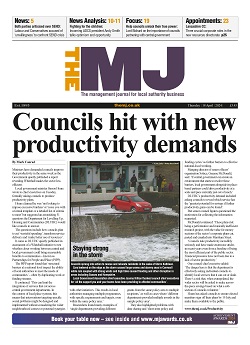On 9 February 2020, Storm Ciara caused Calderdale’s fourth major flood in eight years. More than a third of homes and over 50% of businesses that flooded in England last winter were in the Calder Valley. Storm Ciara’s damage across 10 miles of Calderdale was another harsh reminder of the local impact of the global climate crisis. Since then we’ve faced 16 flood alerts/warnings. Devastating flooding on Boxing Day 2015 affected more than 2,500 residents and 1,250 businesses. This January, Storm Christoph brought 108mm of rain – matching Storm Ciara – but over 48 hours rather than 18. A near miss.
We are living with climate change in the form of frequent extreme weather, constant flood risk, ongoing financial pressure and intense fear and distress throughout our communities.
Calderdale’s unique topography heightens this. Flood risk is embedded in our steep-sided valleys – the same landscape that we love, that makes our place distinctive. We’re determined to protect its beauty. Determined not to accept that harm from flooding and environmental damage are our reality forevermore.
We can beat this. Calderdale is resilient. We’re in it together. We were among the first councils to declare a climate emergency in January 2019 and tackling climate change is a cabinet priority. This will play a major role in our recovery from COVID-19.
With our partners and communities, we’re making strides in flood protection and reducing climate change impacts.
We have learned the importance of combining engineering, nature and community-based approaches to reduce flood risk. We’ve learned to always think ‘partnership’. Investing time in relationships creates better emergency responses.
The role of physical flood defences is seen in:
- Our work with the Environment Agency on Mytholmroyd’s £41m Flood Alleviation Scheme, better protecting around 400 homes and businesses this winter.
- Work with Yorkshire Water to hold down reservoirs above Hebden Bridge by 10%, leaving floodwater storage capacity.
- Our grants to help residents and businesses build flood resilience. This worked well when local people boosted Storm Christoph preparations with their own defences.
It’s also important to go to the root of the causes of flooding and slow the flow of floodwater into our valleys. Since 2015, we have found Natural Flood Management beneficial for flood risk reduction, the environment, health and wellbeing. We work with groups like Slow the Flow, Moors for the Future and Treesponsibility on natural solutions including planting trees and restoring moorland. We’ve installed 309 leaky woody dams. We’re excited to see work progress on our new wetlands nature reserve, which will create an area for floodwater attenuation, habitats and walking. It will add to the 15 nature-based schemes completed and the four in progress, funded through council and Environment Agency landowner grants.
We’ve learned that communities are key – embrace them, work with them. Calderdale’s kindness drives every flood response. A positive legacy of repeated flooding is our strong community support hubs and volunteering network, which boost the joint response to floods and recently, COVID-19. We have better vulnerability data through shielding work. During Storm Christoph, we had evacuation plans and virtual hubs ready.
Hubs are amplified by volunteer flood wardens – vital eyes and ears on the ground during severe weather. Flooding is a key concern for me as cabinet member and a local resident. I have personally felt the impact, which inspired me to become a flood warden. The team’s local knowledge and support are invaluable
We see the same togetherness in our wider climate emergency response. When we stepped up climate change work in 2019, we were impressed by local people taking their own steps. Sharing advice on how everyone can protect the environment is a significant part of our work, which also includes:
- Our £1m carbon neutral fund, helping Calderdale to be carbon neutral by 2038.
- A climate emergency officer forum, creating opportunities for council and community projects.
- Community tree planting, including 700 trees planted through staff volunteering. We plan to encourage residents to switch to council tax e-billing, using savings to plant more trees.
- Welcoming our first 35 electric/hybrid council vehicles.
- Introducing ten electric vehicle chargepoints across Calderdale.
- Installing LED streetlights, cutting more than 3000 tonnes of carbon dioxide annually and saving around £10m in energy by 2030.
- Improving walking/cycling facilities and closing roads around schools for drop-offs and pick-ups.
This work is fantastic, but to achieve our Vision2024 for Calderdale to build greater resilience,we need more. The situation is not sustainable – for our communities’ wellbeing and the council’s cost of constantly being on alert. We have pressed the Government repeatedly to recognise our unique flooding threat and unlock resources to protect our communities. National funding rules are being considered, but we want to see the details before welcoming any changes.
With the UN Climate Change Conference being in the UK this year, we have an opportunity to unite, make ourselves heard and bring these issues to the fore.
Cllr Scott Patient is Calderdale MBC’s cabinet member for climate change and resilience

